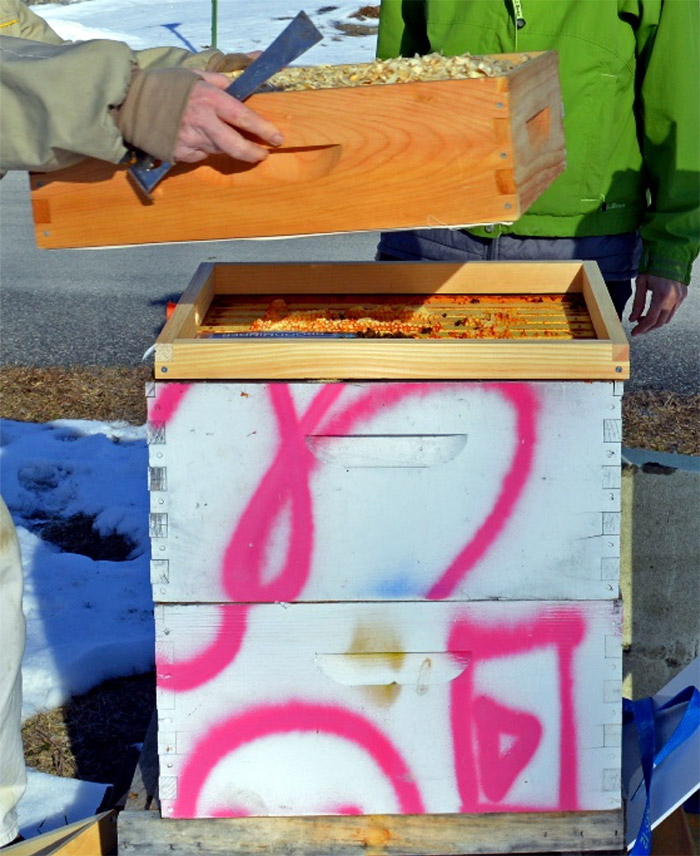The data do not lie, but sometimes it doesn’t show what you expected.
Last month the temperature data BroodMinder sensors inside the hive showed a tantalizing upward swing, hinting (perhaps) at the resumption of brooding in what we call our scale hive. Alas, that appears not to be the case. The temperatures stayed up, flirting with the mid-to-high 80 degrees F, but never really slipped solidly into the temperatures needed to raise brood (92 degrees F, or higher.) While it is always possible there is brood in some far corner of the lower box and the 80 degree temps are just the distant echo of that, it is also likely that the bees just haven’t settled down to their end-of-winter work, yet.
Beyond that, the BroodMinder sensors are confirming the hive is alive, which is comforting, if not exactly surprising.
And equally comforting at this time of year when beekeepers tend to fret about the remaining amount of resources still available to the bees, is the small cumulative change in hive weight. From the time of installation, back in early November of 2019, the hive has only lost about 15 pounds, or about 2 full deep frames of honey. Since the hive likely started the winter with 10, or more, deep frames of honey, this rate of consumption is very modest.
When asked to review the data, the BroodMinder staff noted two things. That the steady 80 degree readings in the lower box indicated a strong colony capable of maintaining its cluster temperatures, despite the challenge of below-zero degree temperatures outside. And that the relative humidity reported by the sensor in the upper box was almost always far above the “normal” range.
As an experiment to see what would happen to the high humidity, we decided to add a quilt box to the colony. This was done on January 30th, in the early afternoon. During this manipulation, we discovered that the inner cover was one without any notch on the rim. When it was removed, there was a small group of live bees milling around on the frames just below the oval opening in the center of the inner cover. We added a shim to make a small upper entrance and popped the quilt box on, and closed up the hive.
The BroodMinder sensors picked up this change right away. The temperature reading in the upper box soared and the humidity level went quickly down into the normal zone. But after 72 hours, those changes have been gradually reversed back to the pre-quilt box ranges. It’s once again damp and chilly at the top of the upper box, despite the outside air temperatures now being warmer. This will certainly be disconcerting to fans of quilt boxes. Next month’s report should give a more complete picture of a quilt box’s effect.
It is also likely that between now and then, there will be unequivocal signs of renewed brood raising, which will be exciting to see logged on the temperature graph. However, if that is not the case, then it may be a sign that something may have happened to the queen to prevent the start of brood rearing. And that will also have dramatic consequences for the colony’s survival.


